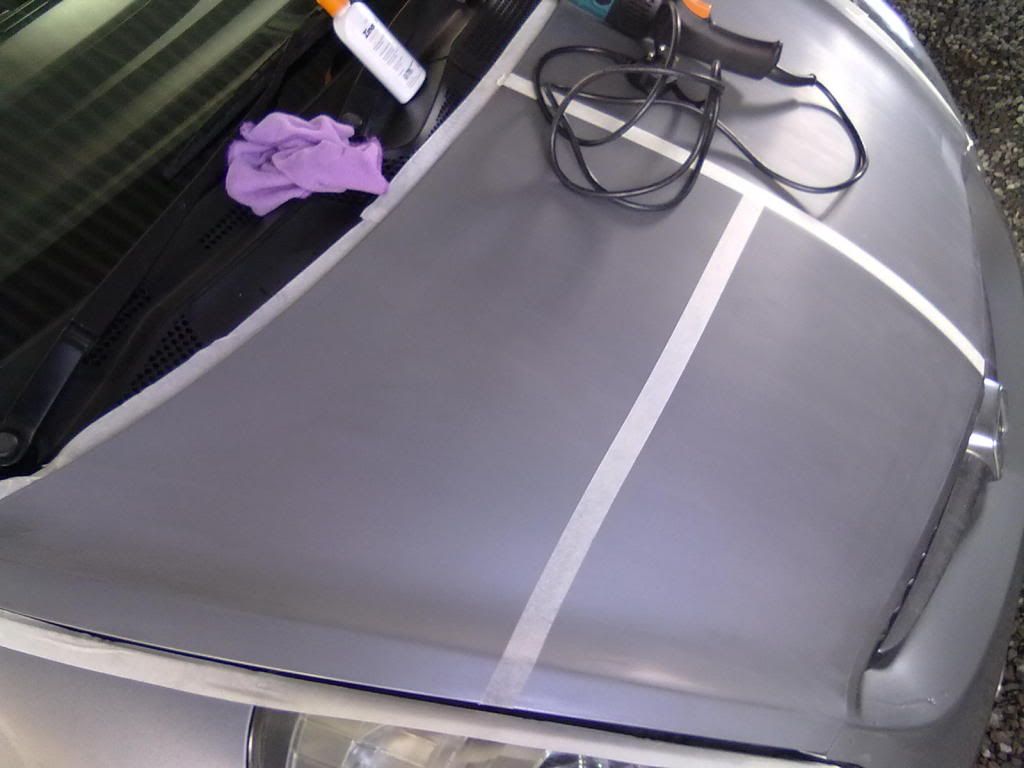Thanks so much Dave for your invaluable insight.:dblthumb2:
You are quite welcome, I try to do my part here.:xyxthumbs:
The car's paint was flat and plain.
Yes it was but it looks great now even with the flaws that can be seen in the sun.
well, could you please elaborate on "PG being fully broken down"?
Especially, the issue of "stop buffing when residue goes clear", as PG dries very fast. So, any tips to increase its working time?
Well, abrasive polishes and compounds of course all have abrasive particles in them. I really doubt that the manufacturers are willing to give out much information regarding the specific hardness, density or actual size of these abrasive particles other than to say that they are either S.M.A.T. or D.A.T. see this article by Mike Phillips.
http://www.autogeekonline.net/forum...anted-know-about-meguiar-s-smat-products.html
Some of what I understand about the abrasives used in polishes and compounds are that some abrasive particles are larger than others, some are harder than others, some are pretty "crude and rude" and some are finely milled and of a very high quality.
Some compounds have finely milled, very hard synthetic abrasives that cut and cut until you turn off the machine. Some have high quality abrasives that are not quite as hard as the synthetic abrasives that need to be worked until the size of the abrasives break down into smaller sized abrasives. A better way to say it may be that the abrasives in some compounds diminish in size as they're worked between the pad and the paint.
Some compounds have a combination of finely milled super hard synthetic abrasives and softer diminishing abrasives both. The synthetic abrasives in these compounds will cut fast on any paint and the diminishing abrasives will "crumble down" or "break down" in size as they are worked against the paint and aid in leaving the paint nice and glossy. The combination of the two theoretically will cut fast and finish well.
Then you have the "Crude and Rude" super duty compounds which are commonly referred to as "Rocks in a Bottle" and for the most part are more a part of history more so than commonly used other than by boat detailers and hacks that don't realize that betters stuff exists. I do have some and do use it from time to time on things like rough cutting severely oxidized gel coat (boats) or severely F.U.B.A.R.'d head light lenses. There is a time and a place for rocks in a bottle. I draw a skull and crossbones on the bottle so any helpers that I might have working with me will ask "What is this stuff?" rather than mistakenly pick it up and use it on the fender of a Bentley.
I believe (and someone may correct me if I'm wrong) that Power Gloss uses a semi hard and rather large abrasive particle that was designed for working with harder paints to remove heavy swirls and RIDS via rotary polisher. I believe that the Power gloss actually relies on the hardness of the paint to efficiently diminish the size of the abrasive particles in it. So on hard paint you get good cutting action with your first pass or two than with each additional pass it breaks down rather quickly by crunching and rolling between the hard paint and the pad and as the abrasives break down into smaller pieces they begin to polish more so than cut. With the rather short working time, the abrasives don't really diminish enough to finish out LSP ready so a swirl remover is used afterward and then a finishing polish if needed or desired.
If I am correct in my thinking that PG relies on the hardness of the paint to aid in the diminishing of it's abrasives then it stands to reason that when working it against soft Honda paint that the soft paint being more pliable or perhaps malleable may be a better word, the abrasives might be kind of just rolling and scraping around against the paint and not really breaking apart or diminishing by the time the liquid carrier dries up. So you'd in essence be making a mess of things rather than creating a glossy defect free finish.
I am no compound/polish guru or formulator or chemist so what I am writing is just the way I envision things in my mind. I have put a lot of thought into what is happening when I put the pad to the paint and I have spent years worth of long nights reading on these forums to try to know all that I can about the subject of paint correction so again take it for what it's worth.
Your opinion and findings count a lot, not only for me but for others who read it as well. :xyxthumbs:Actually, you are spot on.:dblthumb2:
Thanks a lot
Zaid
Thank you Sir.









